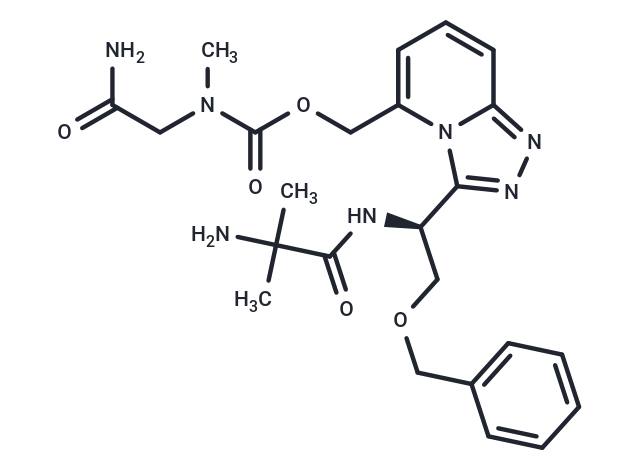Shopping Cart
Remove All Your shopping cart is currently empty
Your shopping cart is currently empty
BMS-604992 (EX-1314) free base is a selective, orally active, small-molecule growth hormone secretagogue receptor (GHSR) agonist with high-affinity binding (k i = 2.3 nM) and potent functional activity (EC 50 = 0.4 nM), capable of stimulating food intake in rodents.

| Pack Size | Price | USA Warehouse | Global Warehouse | Quantity |
|---|---|---|---|---|
| 5 mg | $970 | Inquiry | Inquiry |
| Description | BMS-604992 (EX-1314) free base is a selective, orally active, small-molecule growth hormone secretagogue receptor (GHSR) agonist with high-affinity binding (k i = 2.3 nM) and potent functional activity (EC 50 = 0.4 nM), capable of stimulating food intake in rodents. |
| Targets&IC50 | GHSR:0.4 nM (EC50), GHSR:Ki: 2.3 nM |
| In vitro | BMS-604992 demonstrates high-affinity binding (K i = 2.3 nM) and potent functional activity (EC 50 = 0.4 nM) for the ghrelin receptor[1]. |
| In vivo | BMS-604992 (500 μg/kg; i.p.; 5 minutes) significantly increases gastric emptying compared to vehicle-treated mice[1]. BMS-604992 (1~1000 mg/kg; p.o.; 1 hour) exhibits a dose-linear increase in plasma concentrations and a dose-responsive increase in food intake relative to vehicle-treated controls, with a minimum effective dose of approximately 10 mg/kg[1]. BMS-604992 (300 mg/kg; p.o.; 5~20 minutes) shows a significant difference at the 5-minute time point[1]. BMS-604992 (500 μg/kg; i.p.; 4 hours) increases food intake approximately 2-fold compared to vehicle-treated controls[1]. Animal Models: C57BL/6 mice, SD rat, Male GhrR KO and WT mice. |
| Synonyms | EX-1314 free base, BMS-604992 free base |
| Molecular Weight | 497.556 |
| Formula | C24H31N7O5 |
| Cas No. | 760944-56-7 |
| Smiles | CN(CC(N)=O)C(=O)OCc1cccc2nnc([C@@H](COCc3ccccc3)NC(=O)C(C)(C)N)n12 |
| Storage | Powder: -20°C for 3 years | In solvent: -80°C for 1 year | Shipping with blue ice/Shipping at ambient temperature. |
| Size | Quantity | Unit Price | Amount | Operation |
|---|

Copyright © 2015-2026 TargetMol Chemicals Inc. All Rights Reserved.